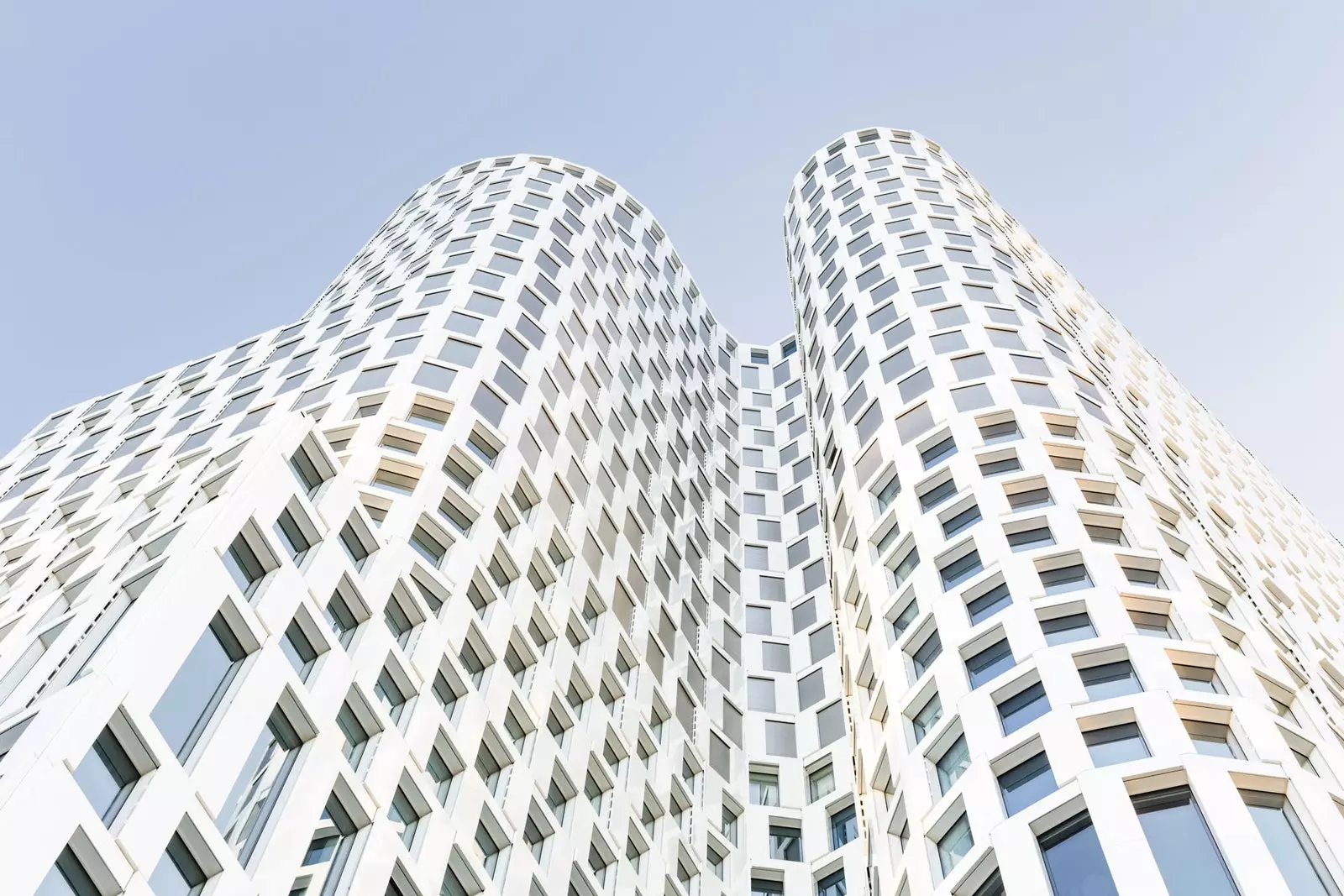
Berlin, one of the starting (and ending) points of the German design route
I can be accused of chaotic traveler -which is true if only my steps are traced by the orography of a map-, but my apparent wanderings cease to be when one understands how appetizing it is enjoy and lengthen , as far as possible, the achievement of the final destination.
This is how I have drawn my quirky journey through german design . The clues of this kind of gymkhana are Schwäbisch Gmünd, Frankfurt, Weimar and Berlin.
Two of them are mandatory destinations in this discipline, one is only accidental and the last one is an interesting ellipsis to make the final goal more desirable and distant. Fear not, identification is easy...
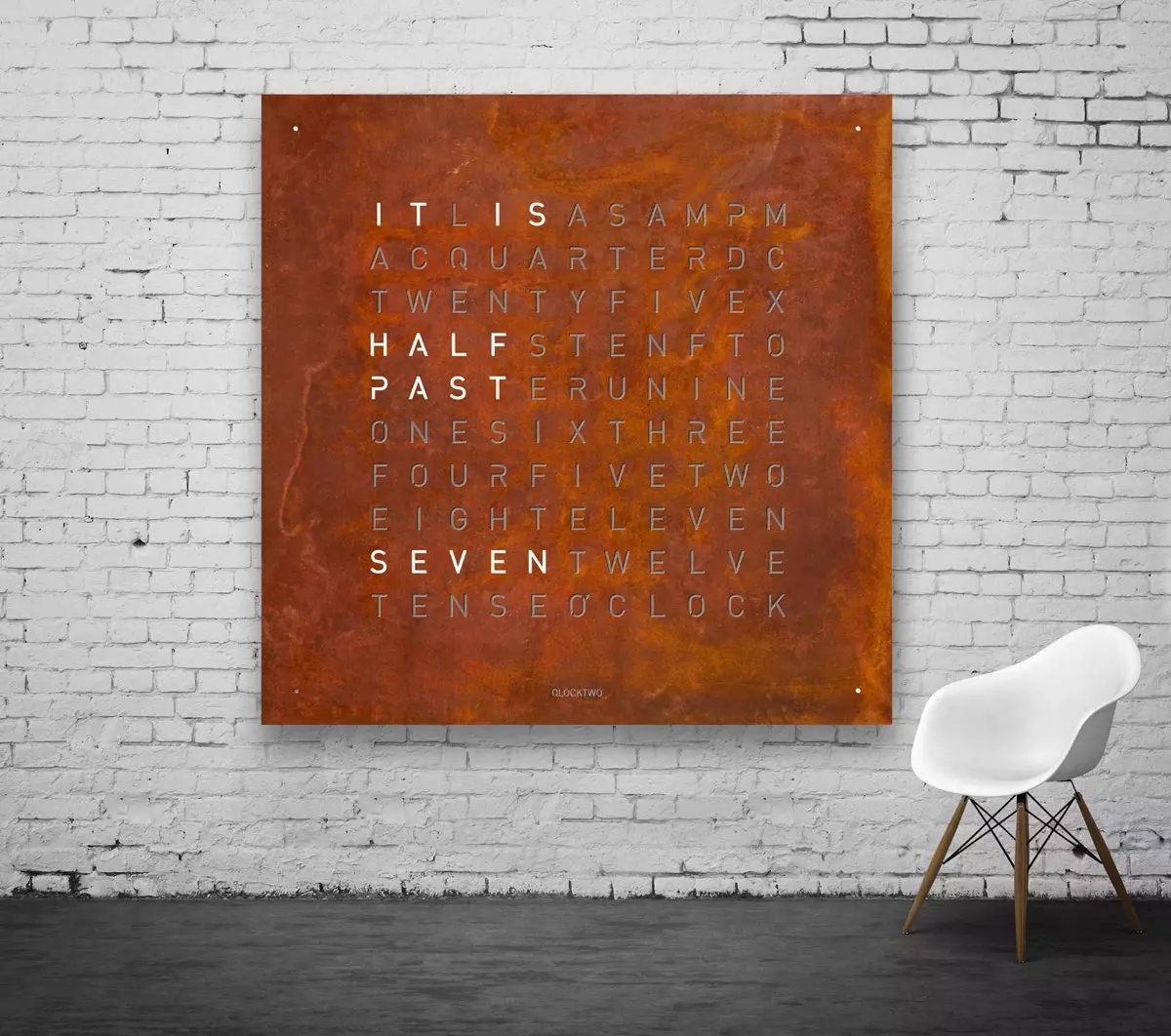
Qlocktwo creation process
According to experts, the panorama of German design as we know it today is based on three main pillars: German Association of Architects, Designers and Industrialists , founded at the beginning of the 20th century; the Ulm University School of Design , in charge of training the great German creators during the postwar period; and the Bauhaus school , the first design education center in the world founded in 1919.
The postulates of the latter -the most popularized being his famous "less is more" - are expressed in the reality of this nation that has seen the birth clocks as simple as they are original in their expression of the passing of the hours .
With **Qlocktwo (2009) ** , the German design duo Biegert & Funk has achieved worldwide success and several awards with a brilliant idea, as simple as it is innovative: clocks that tell the time literally. That is: "it's half past seven" in 20 languages.
The hours thus “verbalized” become visible thanks to a lighting system with led lights . The result are authentic minimalist works of art with a wide variety of finishes and fronts; authentic paintings of various sizes that, since last year, have been reduced to the format of wristwatches.
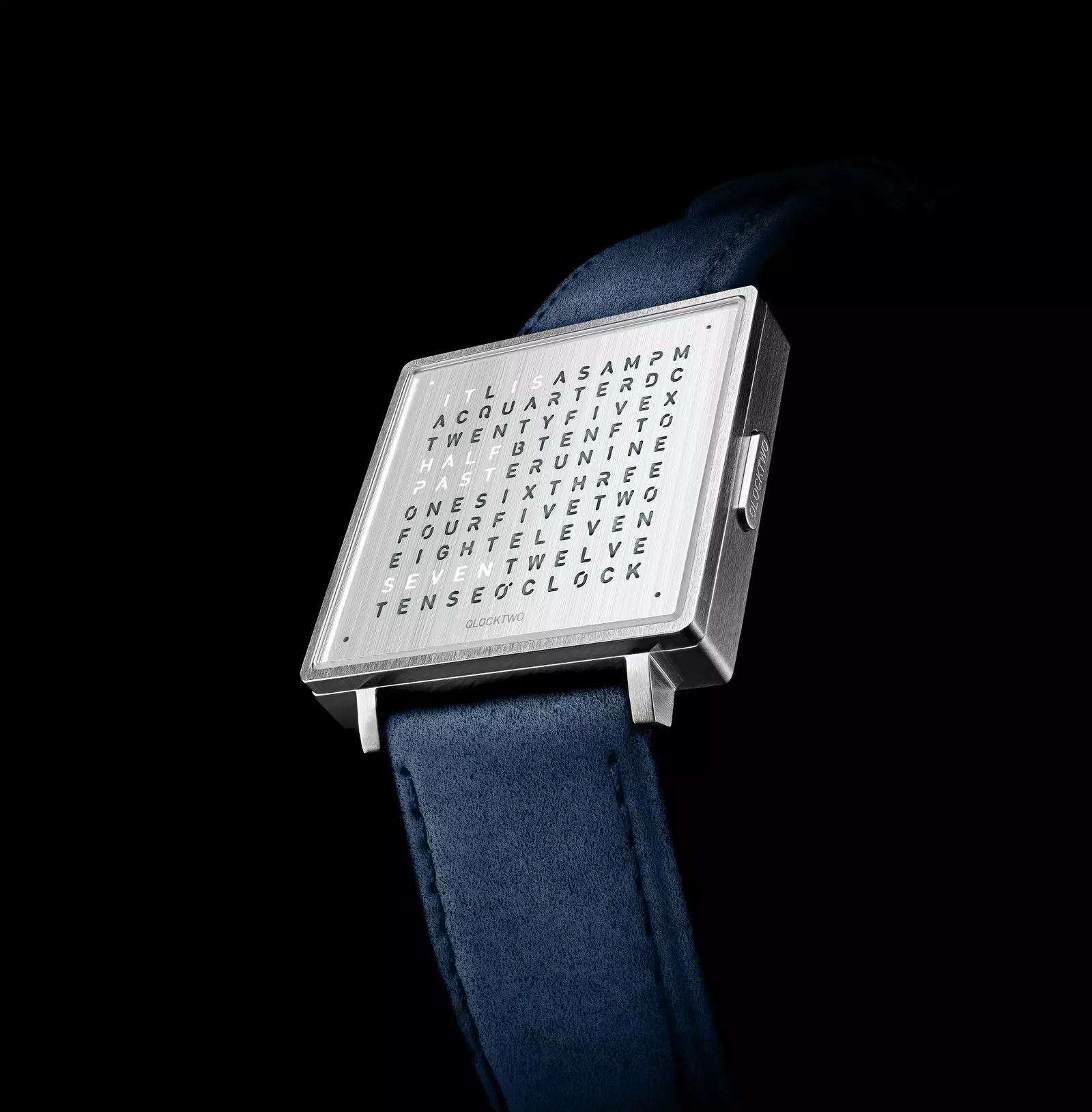
qlocktwo
SCHWÄBISCH GMÜND: THE SPOKEN HOURS
The creators Andreas Funk and Marco Biegert created their company in Schwäbisch Gmünd , about 50 kilometers from Stuttgart. And it is there where we direct our steps to make an alternative tour of the always simple and functional, but exciting, German design.
From this small town we will jump to ** Frankfurt (or Frankfurt) ** and then to Weimar, the historical cradle of Teutonic design and seat of the Bauhaus Historical Museum , to conclude in Bauhaus Archive / Berlin Design Museum , where the largest collection in the history of this school is located.
The "Bauhaus lamp" , the steel tube chair by Marcel Breuer or the "Bauhaus wallpaper " are already contemporary classics. The Bauhaus has influenced the shaping of our daily lives and is the nation's most successful German export company.
Through clear lines and shapes, he changed design in the world . The brain of movement Walter Gropius , arrived in New York in 1937, after a short stay in London, where he was received on a red carpet. The migration of the Bauhaus stars made it possible for German design to become known to the world.
A design that has been applied throughout its history in all kinds of everyday objects for the home or, without going any further, in the famous Adidas from the early 70s , the "shoe with the three straps", that everyone wanted to wear and that today continues to be a fetish among the young generations.
Schwäbisch Gmünd It is the largest city in the Remstal region, both in terms of population and area, and within its municipal area there are four nature reserves.
From the medieval-looking **square (Marktplaz)** to the **Cathedral of the Holy Cross (Heilig-Kreuz-Münster) , the streets trap us as if on a trip to a very remote era to which their current entertainment venues are alien: from restaurants with exotic cuisine for these latitudes, such as Mexican cuisine, to an Irish tavern or some bars and nightclubs in difficult to catalog, such as ** Le Clochard Schwäbisch Gmünd, M7 or 7grad Schwabisch Gmund.
It is obvious that we have arrived at this locality via Stuttgart , where we do not stop on this itinerary. We leave it rather for speed lovers, who have in this city the ** Mercedes-Benz Museum and the Porsche Museum **.
Although it is off our track, it will nevertheless always hold a very dear place in my heart, because it was there that I met Michael Schumacher, but that is another story…
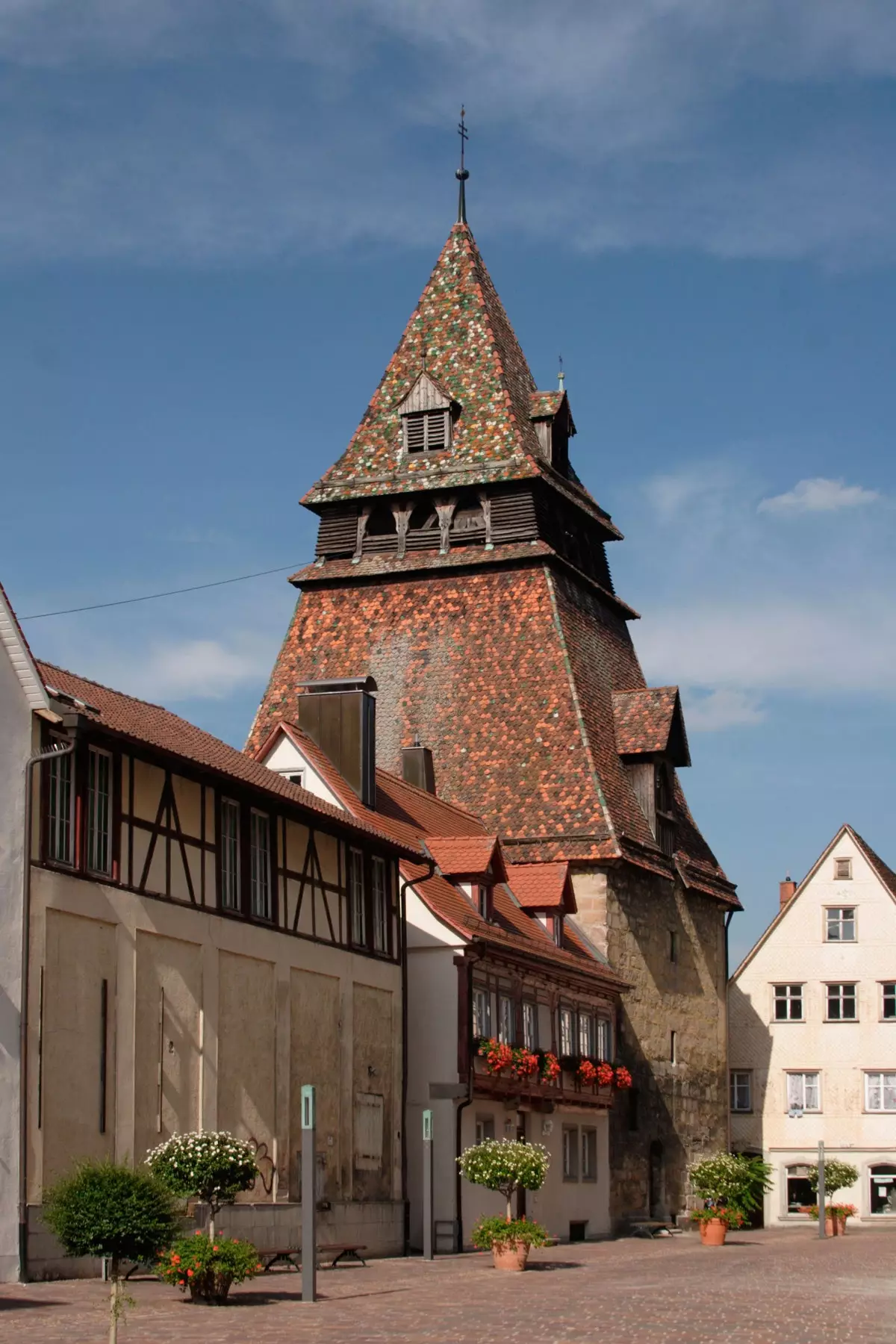
Holy Cross Cathedral, Schwäbisch Gmünd
FRANKFURT AM MAIN, BETWEEN GOETHE AND MANHATTAN
Frankfurt is the financial capital of Germany and the gateway to Europe, through whose airport we have traveled on many occasions on our way to the Asian continent, in my case in particular.
And it is that in this city, in addition to the Car exhibit hall (speed appears again) , is where the largest book trade fair in the world takes place; an event that brings together in mid-October the best of the publishing world from all over the planet.
The stop in this city is not accidental; We couldn't stop being interested in the literature, film or fine arts and much less than cider taverns or by the Fifth Avenue of Germany , whose name, although of "comic" imperial resonances, does nothing but literally reproduce the German what we can find in the authentic and New York avenue.
This pedestrian street is animated with the presence of fashion boutiques and major chains and stores, as well as a ten-story shopping mall, the Zeil Galerie . A modern setting that accentuates the contrasting personality of this great city that treasures so many and so diverse settings.
But in Frankfurt you will also find the writer Goethe's house and a riverside made up of great museums. Although Goethe's birthplace was destroyed during World War II, it was later completely restored with the original furniture, paintings and books of the Goethe family.
Letter fetishists can be inspired by the desk where Goethe wrote The Misadventures of Young Werther . The distinguished writer was trained there by his own father until he left home at the age of 16 to study law in Leipzig.
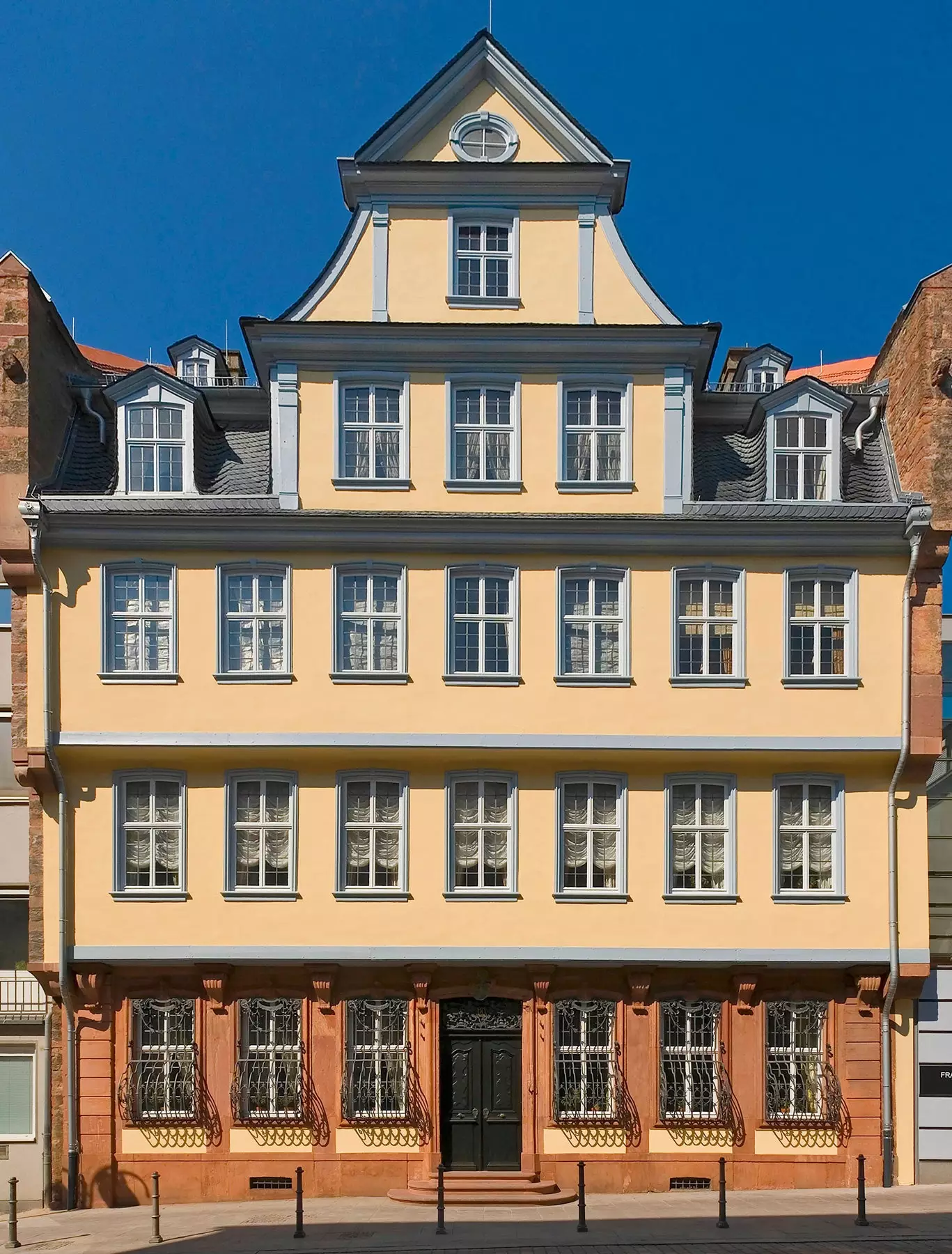
Goethe's house in Frankfurt
The visit to Goethe's house it includes its four floors: the access floor, with the old kitchen and lounges; the first, which is accessed (and the others) by a large baroque staircase that bears the initials of the parents in the cast iron decoration, and which leads to the great hall and the music room, with period furniture and some original parts.
The second floor houses the parents' bedrooms, the library and the study room, decorated with a large bookcase and a traditional ceramic-clad stove; and the last one exhibits the original documents of Goethe's work.
In the Ribera de los museos you can find, among others, the German Film Museum and the Städel Museum of Fine Arts , which has 3,000 paintings from the Middle Ages to the present, 1,000 of them on permanent display, 100,000 drawings and prints from the drawing collection, 4,000 photographs, 600 sculptures, and 115,000 books.
The German Film Museum or Deutsches Filmmuseum It is a space dedicated to the seventh art. It was opened between 1983 and 1984 to expand the activities of the Frankfurt municipal cinema, but what they managed to do was create one of the most interesting exhibitions on the seventh art.
It has several private collections from different eras of cinema, many of them with copies for loans.
Don't forget the Museum of Modern Art , famous for its extensive art collection, which includes artists such as Roy Lichtenstein, Joseph Beuys, Andy Warhol and Richter Gerhardt, and for its daring architecture.
Designed by Viennese architect Hans Hollering, the museum has a triangular shape and is commonly called "the slice of cake" by locals.
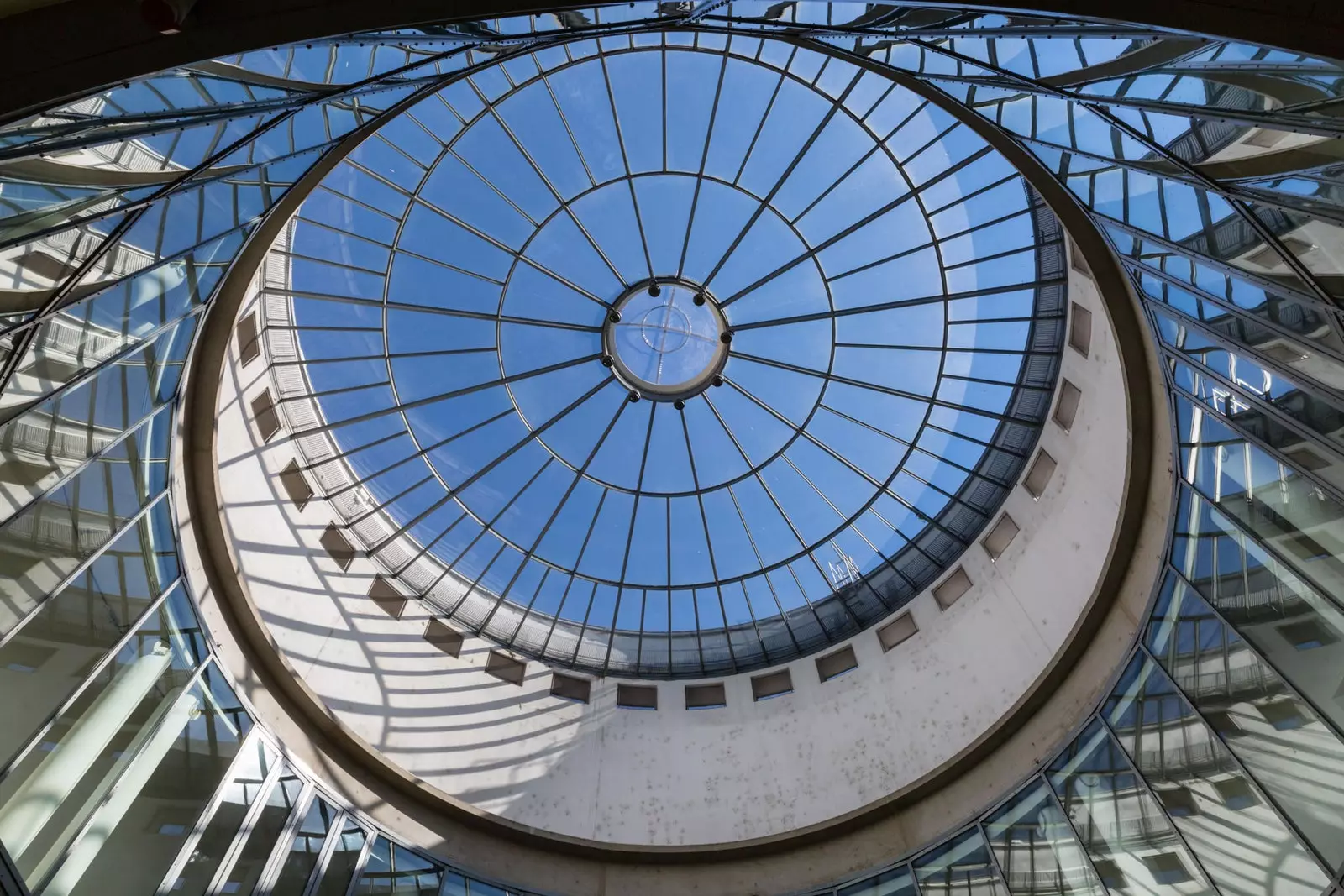
Museum of Modern Art, Frankfurt
In Frankfurt, the local drink par excellence is the Apfelwein, or Ebbelwoi, a mild alcoholic apple drink that occurs around the city.
Some of the oldest and best cider taverns are found in the cobblestone streets of The Sachsenhausen district , south of the Old City.
In Apfelwein Wagner you have to try the most authentic of Frankfurt: the milanese with green sauce, prepared with seven herbs (borage, chervil, watercress, parsley, pimpernel, chives and sorrel), or a typical cream cheese with paprika served as a starter.
And all washed down with the cider that is served in pitchers of all sizes . As an accompaniment, you can have some 'frankfurt' in the market kleinmarkthalle and then a coffee and some chocolate dessert in Bitter & Zart.
Before continuing with the next stage, we can rest in the Hotel Villa Kennedy **(Kennedyallee 70) ** , a five-star luxury neo-Gothic establishment dating back to 1904, set around a beautiful historic villa.
The hotel has 163 contemporary style rooms plus a 1,000-square-meter luxury spa and picturesque central garden.
If you prefer something more functional and with better views of the city, we will opt for the Hotel Innside Frankfurt Eurotheum , an imposing and extravagant establishment located between floors 22 and 29 of a skyscraper located in Neue Mainzer Straße 66-68.
It has 74 rooms decorated in different styles, which have large windows ideal for enjoying privileged views of the city.
After all, a particularity of Frankfurt is the concentration of skyscrapers, which are among the tallest buildings in Europe, for which the city has earned the nickname of Mainhattan.
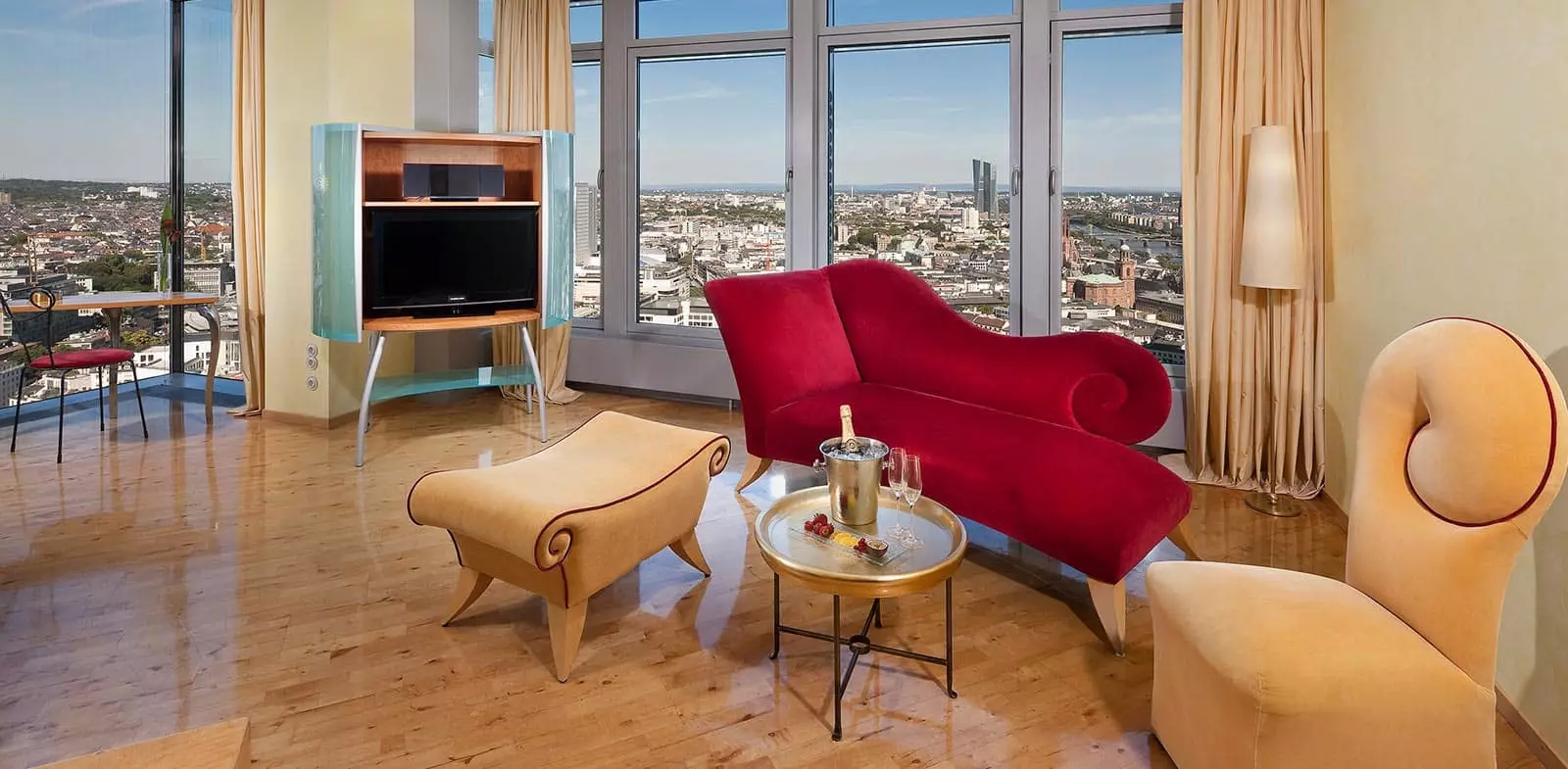
The impressive loft of the Hotel Innside Frankfurt Eurotheum
WEIMAR: CRADLE OF BAUHAUS WITH RESONANCES TO HISTORY AND LITERATURE CLASS
the journey to Weimar It can be done by highway or by train in just under three hours. Located in Thuringia, the geographical center of the country, it is an essential stage of our journey towards German design. Many will know her from school by her epithet "Republic of" Weimar.
So we spent a day in Weimar, one of the oldest cities in Germany, to visit the house of Goethe, by Schiller and Franz Liszt, where the buildings of the Bauhaus school were declared a World Heritage Site by UNESCO in 1996.
The Goethe's baroque house in Frauenplan , where the poet lived for almost 50 years, from 1782 until the day of his death in 1832, can be seen just as the writer left it in the last years of his life.
The house with a garden, located in the park on the banks of the Ilm , was a gift from Duke Carl August of Saxe-Weimar-Eisenach to link Goethe with Weimar, becoming his refuge close to nature.
The gifts of goethe as head of works have been embodied in the Casa Romana, erected as the first classicist building in Weimar.
Also worth a visit is the inn ** Zum weißen Schwan **, located opposite Goethe's house, where the poet probably enjoyed the occasional glass of wine.
This cozy old inn, although perfectly restored , offers us all Thuringian specialties prepared with sobriety.
Related to the literary figure, we have these two restaurants located near the museum:
Restaurant Bettina Von Arnim _(Beethovenpl. 1-2) _
Bettina was a German writer and romantic novelist, sister of the poet Clemens Brentano, and wife of the poet Achim von Arni . This restaurant reminds us of the writer, contemporary and friend of Goëthe.
Located in the Hotel Dorint, it offers delicious typical food from the region (meats, cheeses and fabulous desserts), while enjoying the view of Goethe's garden, washed down with a wide selection of fine vintages.
** Anastasia Restaurant _(Goetheplatz 2) _**
"Court atmosphere, dignified elegance in classic style" is how food critics describe this restaurant Gault and Millau – famous for the popularization of the nouvelle cuisine of the 60s and 70s.
Creative dishes such as Bouillabaisse with fried fish cubes either White tomato cream with prawns - chorizo - shashlik and green sauce . It offers a variable menu and an extensive wine list.
Although Goethe is by far the quintessential national figure, there are other no less prominent artists related to this city.
Schiller spent the last years of his life in a bourgeois house located in what was then an esplanade.
Today, it is decorated in the style of his time and with many original pieces; Also, the permanent exhibition Schiller in Thuringia It allows us to delve into his life and work.
Also FranzLiszt, the brilliant virtuoso, he chose Weimar as his place of residence whenever his prolonged tours permitted it.
Liszt lived in the old Hofgartnerei, at the entrance to the park, which today is the Liszt house-museum.
We finally got to Bauhaus-Museum which, with its more than 300 works on display, allows us to introduce ourselves to the production of the Bauhaus School, whose works have not lost their timeless and simple beauty.
The Museum was founded in the spring of 1919, welcoming, in its beginnings, international artists of the stature of Kandinsky or Paul Klee. Thanks to the exhibitions that can be viewed there, the evolution of the Bauhaus School is clearly appreciated.
Among the objects we find a cradle by the German graphic designer Peter Keler, a table lamp by the industrial designer, born in Bremen, Wilhelm Wagenfeld, or combination teapots, belonging to the German potter Theodor Bogler.
Added to this are various pictorial exhibitions by artists such as Paul Klee or Feininger.
If you visit the city in October, which is highly recommended, you must visit the legendary Onion Market (Zwiebelmarkt), which dates back to 1653 and each year attracts around 400,000 visitors to the historic old town.
Here everything revolves around the onion: the soup, the typical cake of the city, the famous braids or the centerpieces.
On the numerous stages of this market-festival, more than 500 artists give their best, and almost as many stalls invite you to enjoy and buy.
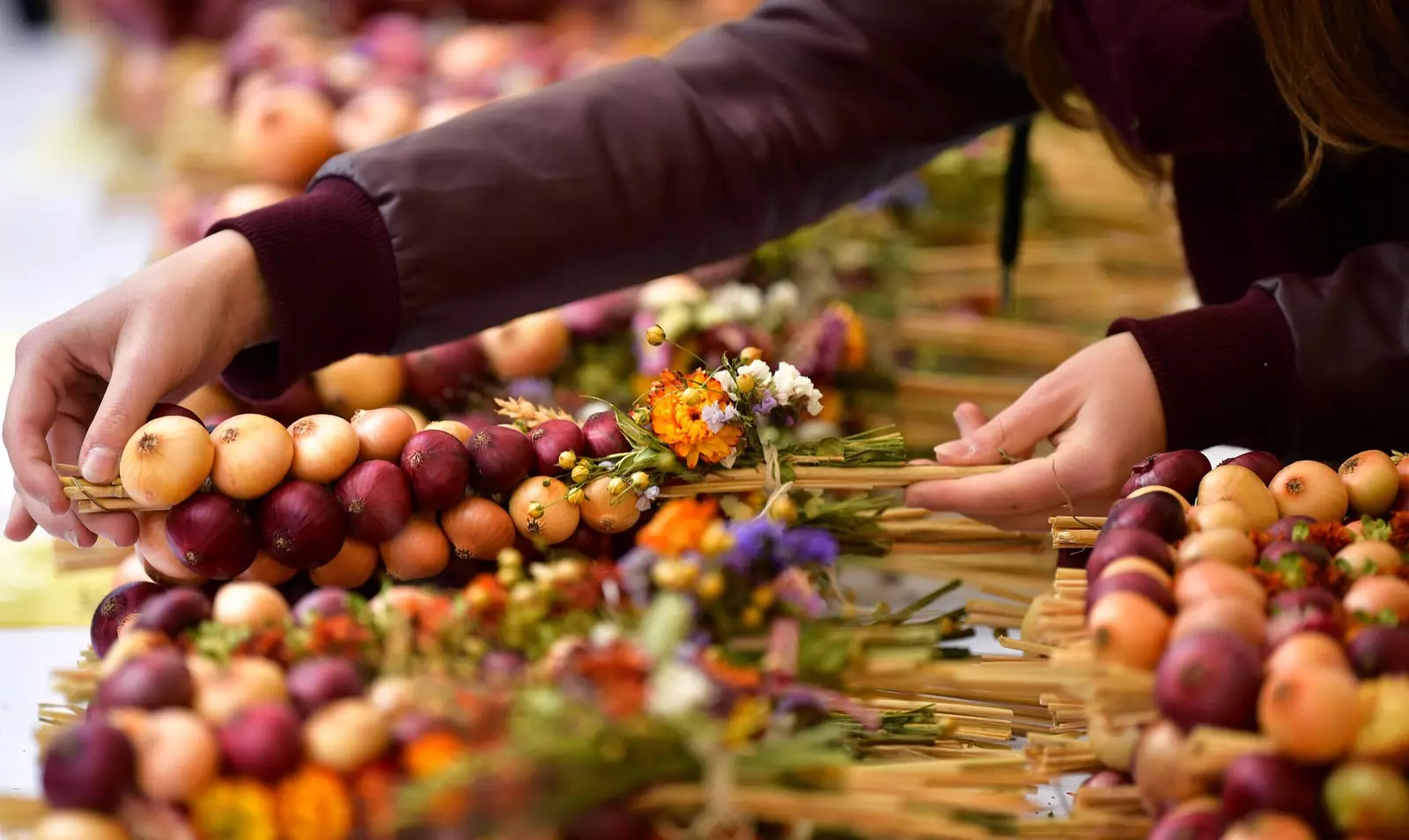
Onion Market (Zwiebelmarkt)
** BERLIN : ARTISTIC AND CULINARY HOT**
We arrived in just two hours - thanks to the ICE high-speed train - at the final stage of our journey.
Although this time we are not going to follow the layout of its ominous (but also historical and, of course, creative) wall, but we will go directly to its artistic environment.
There are even 450 galleries in the city (the most established are Sprüth Magers , ** Eigen + Art ** or aurel scheibler ) and about 200 non-commercial and alternative rooms that exhibit samples of young national and foreign creators.
Berlin, which has its own art week, the berlin artweek, has emerged as the capital of modern design since its reunification – UNESCO declared it City of Design in 2006 -, that's why thousands of people emigrate there every year looking for artistic inspiration.
Experts say that it is the best place in the world to be an artist, to which the fact that the Government regulates taxes based on income contributes a lot.
The Bauhaus Archive or Berlin Design Museum _(Klingelhöferstraße 14, Tiergarten) _ deals with research and school impact.
It is the most comprehensive collection in existence, focusing on the history and all aspects of his work, and is accessible to all.
The museum building is a late work of Walter Groppius, founder of the Bauhaus. It was planned in 1964 for the city of Darmstadt and was built between 1976 and 1979 -with some modifications- in Berlin.
Its characteristic silhouette is a trademark of the German capital.
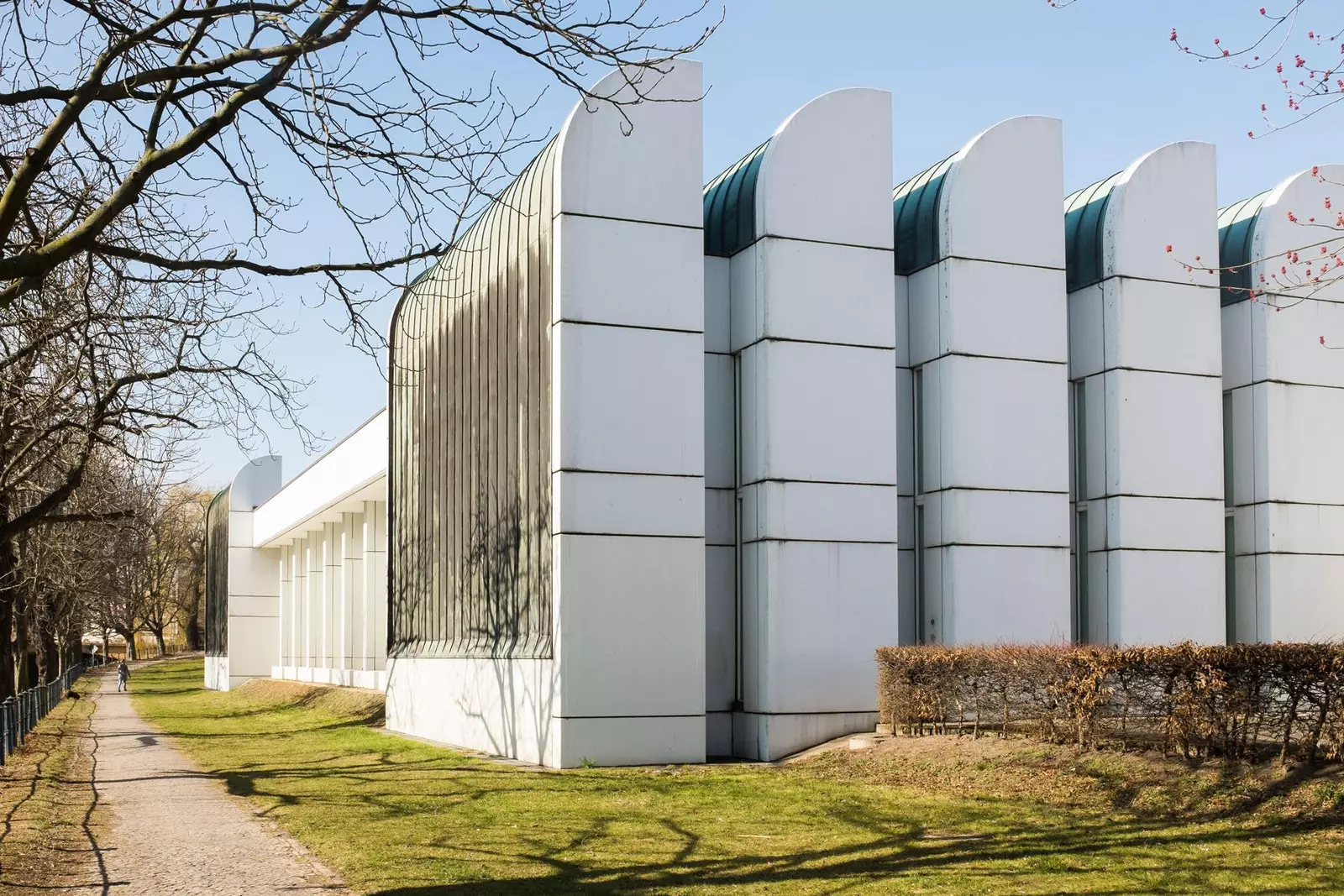
The Berlin Design Museum, also known as the Bauhaus Archive
In the large nave, the Bauhaus archive is presented: architecture, furniture, ceramics, metal, photography, scenery and works, as well as works by famous professors Walter Gropius, Johannes Itten, Paul Klee, Lyonel Feininger, Wassily Kandinsky, Josef Albers, Oskar Schlemmer, László Moholy-Nagy, and Ludwig Mies van der Rohe.
It is located in an area not much visited by tourists, about four kilometers from the Brandenburg Gate.
The annual program of museum includes special exhibitions, conferences, round tables, workshops, readings and concert yes
Of course, the archive-museum has a coffee and also with a store, where you can buy lamps, crockery, stationery items, clocks, books and posters, among other very cool objects.
Before leaving, we get in touch with the daily life of Berliners. The Clarchens Ballhaus de Mitte _(Auguststrasse 24) _ is quite a discovery and the perfect place both during the day and at night.
This two-story ballroom was founded in 1913 and since then it's as if it hasn't changed.
Every night it's up to a different dance style and in the evenings the dance floor is filled with professional dancers ready for any rhythm.
If dancing isn't your thing, you can always order a plate of Käse Spätzle and a pitcher of beer.
the cozy Das Hotel _(Marinnenstrasse 26ª) _ is one of the best bars in the Kreuzberg neighborhood where to quietly have a few drinks.
You have to try their particular version of the classic gin and tonic while enjoying live music, its decoration shabby-chic and an unbeatable location for people watching. The bar itself is tiny, but that's part of its charm.
Reinhard's _(Poststraße 28) _ It is a restaurant located in the beautiful neighborhood of San Nicolás.
Frequented and praised by Berliners, they perform a refined german cuisine which has made it one of the best restaurants in the German capital for many years.
The Spanish also have a lot to say in this city, if not about design, then about gastronomy.
The Catalan Paco Perez has revolutionized the taste of the Teutons under the umbrella of the gastronomic avant-garde, making the omelette in a siphon fashionable within its restaurant FIVE by Paco Pérez , located in the five-star Das Stue hotel.
In addition, the Spanish actor Daniel Brühl has opened a bar with a Barcelona atmosphere called Raval and, recently, the Gracia Bar.
They call the latter "the son of a talented kitchen couple formed by Bar Raval and La Pepita, the culinary phenomenon of Boixet and chef Sergio Andreu located in the heart of Barcelona". Will have to try it...
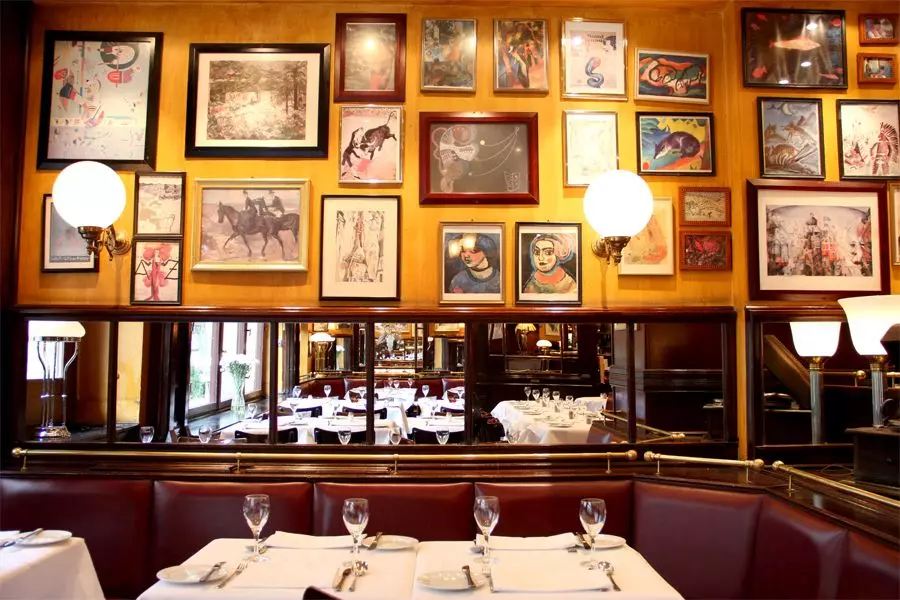
Reinhard's remains one of the best restaurants in the German capital
APPENDIX
And so that it does not seem that in the end the destination has remained in a gastronomic and not artistic feast, we enclose a list of key brands of the great German design houses.
Biegert & Funk: studio of designers, creators of the Qlocktwo watches that literally tell the time. They exist in wall or frame sizes of different dimensions and finishes and in bracelet format.
Decor Walther : House specialized in bathroom accessories based in Frankfurt. His pieces are a great example of the way the Germans approach design: simplicity in the lines, as well as clear references to the Bauhaus school.
Kahla: Since 1884, it has been manufacturing porcelain tableware designed for daily use. The brand manufactures contemporary design pieces using techniques that have been used for several centuries.
Reisenthel: Founded in 1971, the brand designs everyday objects - shopping bags or storage pieces - as if they were true aesthetic manifestos.
Rosenthal : With more than 130 years of history, its porcelain pieces are highly coveted by collectors. While the company continues to make many of its traditional designs, it releases contemporary lines each year.
WMF: luxury pieces in steel for daily use products, especially kitchen utensils and products for the table.
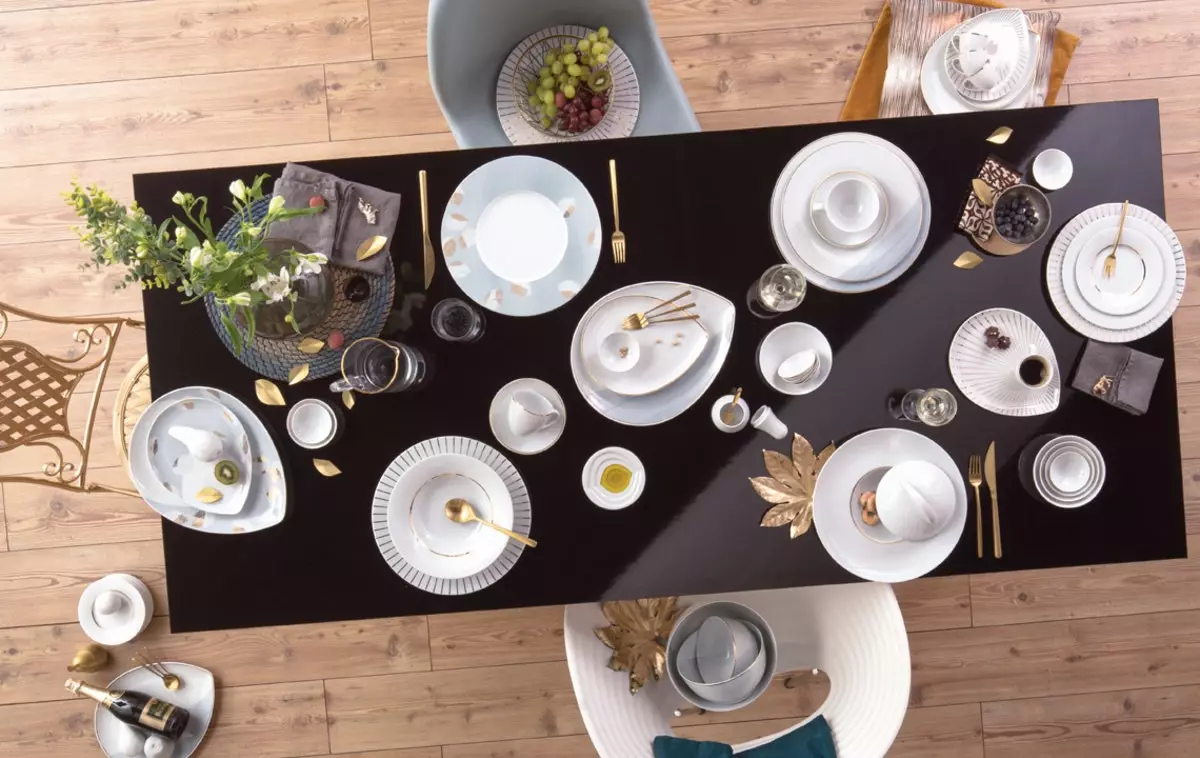
Kahla tableware: contemporary design and techniques that have been used for several centuries
